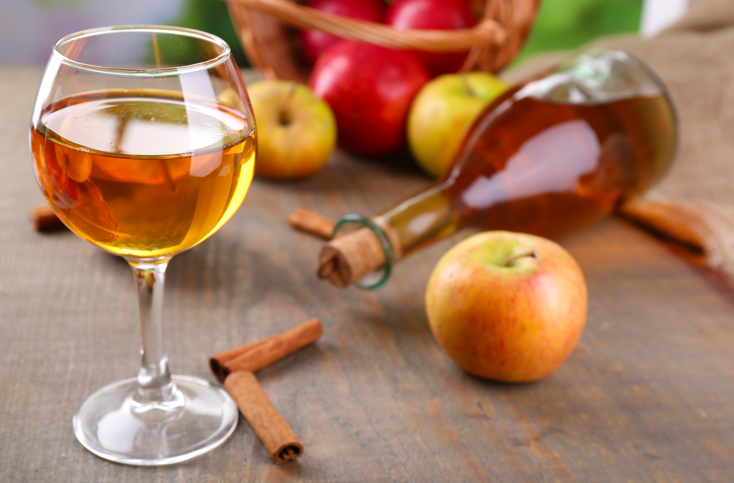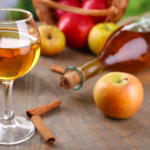Apple wine has a rich history that stretches back to ancient times. This delightful beverage has evolved over centuries, influenced by various cultures and regions. From its early beginnings to modern-day production, apple wine has remained a beloved drink for many.
Key Takeaways
- Apple wine has ancient roots, influenced by the Romans and popularized in medieval Europe.
- In modern times, apple wine has seen a revival, especially within the craft beverage movement.
- There are significant differences between apple wine and hard cider, including their production methods and flavor profiles.
Origins and Early History of Apple Wine
Ancient Beginnings and Roman Influence
The fermentation of apple juice likely began around 6500 BCE in what is now Georgia. Archaeological findings in this region show early production of fermented apple beverages. Apples, which first appeared in the Tien Shan Mountains, spread to various regions, including the Caspian Sea area, evolving into the domestic apple’s main ancestor, M. sieversii.
The Romans played a significant role in the history of apple wine. When Julius Caesar began his conquest of Britain in 55 BCE, his soldiers discovered the Celtic inhabitants fermenting the juice of native crab apples. The Romans introduced better agricultural practices, including the importation of other apple varieties and techniques like grafting and pruning.
Medieval Popularity in Europe
During the medieval period, apple wine became a popular drink across Europe. It was especially favored in regions where grapes were scarce and expensive. By the mid-17th century, apple wine was so widespread that rules were established to regulate its production. Penalties for tampering with the formula, such as adding raisins or sugar beets, were severe, including imprisonment or flogging.
Colonial America’s Love for Apple Wine
In Colonial America, naturally fermented cider, or hard cider, was the most popular drink. Apple trees grew easily in the colonies, and hard cider was a practical choice because it had an alcohol level high enough to prevent harmful bacteria but low enough not to cloud the mind. Most apple trees planted during this time were intended for drinking rather than eating. Apple wine, distinct from hard cider, also gained popularity and remains a beloved American spirit today.
Modern Times
Revival in the Craft Beverage Movement
Apple wine has seen a remarkable resurgence in recent years, largely due to the craft beverage movement. This trend has brought renewed interest in traditional and artisanal methods of production. Small-scale producers are experimenting with unique apple varieties and fermentation techniques, creating a diverse range of flavors and styles.
Differences Between Apple Wine and Hard Cider
While both apple wine and hard cider are made from apples, they are distinct beverages. Hard cider is typically fermented apple juice with a lower alcohol content, similar to beer. Apple wine, on the other hand, involves adding extra sugar during fermentation, resulting in a higher alcohol content and a wine-like character. This distinction is important for consumers looking to explore different taste profiles.
| Beverage | Alcohol Content | Production Method |
|---|---|---|
| Hard Cider | 4-8% | Fermented apple juice, bottled early |
| Apple Wine | 10-15% | Fermented with added sugar, aged longer |
Global Variations and Regional Specialties
Apple wine is enjoyed worldwide, with each region offering its own unique twist. In Germany, Apfelwein is a popular drink, often enjoyed in traditional cider houses. France boasts its own version, known as Cidre, which is typically less sweet and more effervescent. In the United States, the craft beverage movement has led to a variety of regional specialties, each reflecting local apple varieties and production techniques.
The global appeal of apple wine highlights its versatility and the rich cultural traditions that surround it. Whether enjoyed in a cozy German cider house or at a trendy American craft brewery, apple wine continues to captivate drinkers around the world.
Production and Varietals
Traditional Methods of Apple Wine Making
Apple wine has been crafted for centuries using time-honored techniques. The process begins with selecting the right apples, which are then crushed to extract the juice. This juice is fermented, often in wooden barrels, to develop its unique flavors. Temperature control during fermentation is crucial to ensure the best quality wine.
Popular Apple Varietals Used in Wine
Different apple varieties bring distinct flavors to the wine. Some of the most popular types include:
- Sweet Apples: Known for their high sugar content, these apples add sweetness to the wine.
- Bittersweet Apples: These apples provide a balance of tannins and sweetness, essential for a well-rounded flavor.
- Bitter Apples: High in tannins, they add complexity and depth to the wine.
- Acidic Apples: These apples contribute a sharp, tangy flavor that balances the sweetness.
Innovations and Modern Techniques
Modern apple wine production has seen several innovations. Producers now use advanced technology to fine-tune the fermentation process and address any issues without altering the traditional methods. For example, temperature control during fermentation has become more precise, ensuring consistent quality. Additionally, some producers are experimenting with blending different apple varieties to create unique flavor profiles.
The wide range of apple varieties is an area that’s just begun to be explored; compared to wine-grape varieties, it’s the Wild West.
In summary, the production of apple wine combines traditional methods with modern innovations to create a beverage that is both rich in history and flavor.
Cultural Significance and Consumption of Apple Wine
Festivals and Traditions
Apple wine holds a special place in many cultural celebrations and traditions. In Frankfurt, Germany, traditional apple wine taverns, known as “Ebbelwei-Wirtschaften,” are central to the city’s cultural heritage. Here, apple wine is served from a Bembel, a typical Hessian stone jug, symbolizing community and togetherness. Tasting this liquid gold means becoming part of Frankfurt’s culture.
Pairing with Food
Apple wine pairs wonderfully with a variety of foods. It complements dishes like roasted pork, sausages, and even spicy Asian cuisine. The wine’s crisp and slightly tart flavor balances rich and savory dishes, making it a versatile choice for many meals.
Health Benefits and Nutritional Value
Apple wine is not just enjoyable but also offers some health benefits. It contains antioxidants that can help reduce inflammation and improve heart health. Additionally, apple wine is often lower in alcohol content compared to other wines, making it a lighter option for those who are health-conscious.
The way we enjoy food and drinks says a lot about our culture. From family dinners to big celebrations, what we eat and drink brings us together. Want to learn more about how different cultures celebrate with food and drinks? Check out our website for more interesting stories and tips!
Conclusion
Apple wine has a rich history that spans centuries and continents. From its early beginnings in ancient civilizations to its modern-day popularity, this beverage has evolved in many ways. Today, apple wine is enjoyed by people all over the world, each sip a testament to its enduring appeal. Whether you prefer it sweet or dry, sparkling or still, apple wine offers a unique taste experience that reflects its storied past. So the next time you raise a glass, remember the journey that apple wine has taken to become the delightful drink it is today.













